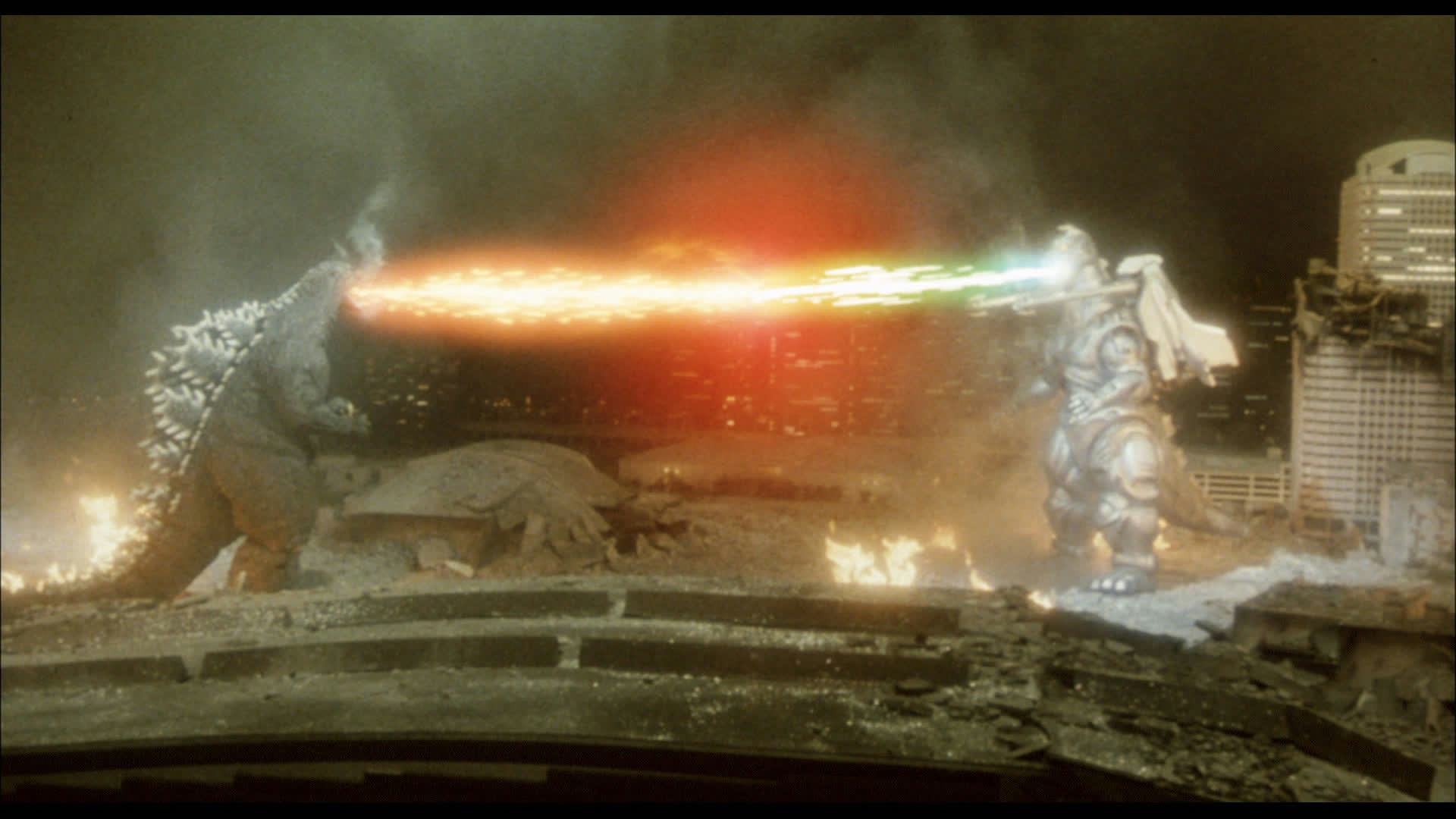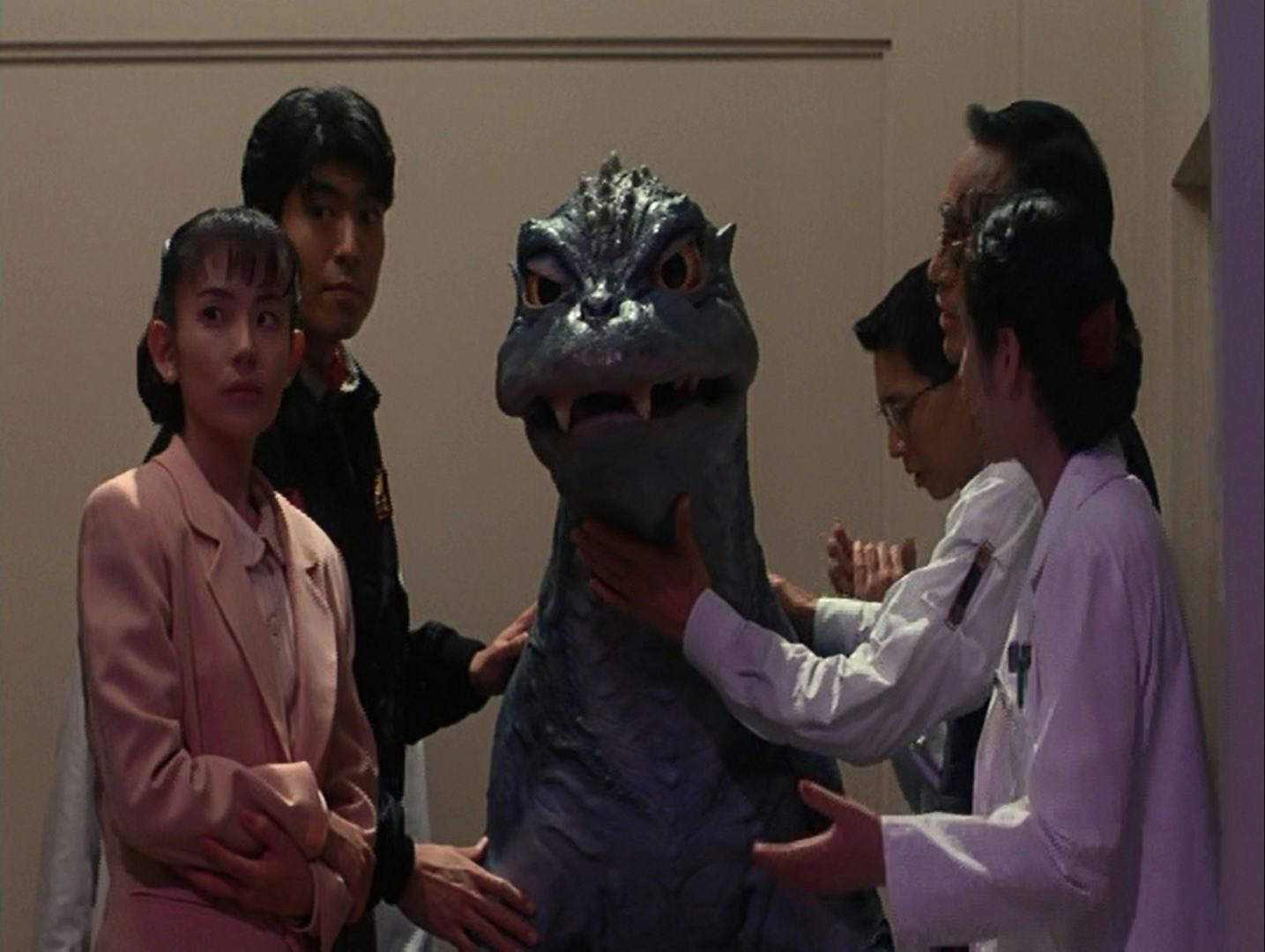
When Godzilla was reborn for his Heisei era of films, the King of the Monsters had changed. The overall tone was darker than his wild and wooly ‘70s output, and the films’ plots often seemed concocted to reflect popular American blockbusters. In Godzilla vs. King Ghidorah there are elements of Terminator and Back to the Future, in vs. Mothra there are bits of Indiana Jones, and in vs. Destoroyah there’s a lot of aliens. Combined with an extended plotline featuring the telepathic Miki Saegusa as the closest the series has to a non-Godzilla leading character and you get a period that feels quite different from the classic Showa Era, even as it recycled old monsters to attract moviegoers.
One of those monsters was Mechagodzilla, the cyborg that would likely receive the silver medal in a competition to determine Godzilla’s most notorious foe (King Ghidorah obviously takes first). The resulting film, Godzilla vs Mechagodzilla II, features both the best and the worst traits of the Heisei age. Its high points are spectacular, while its lows would recur throughout this collection of movies. As the last Godzilla film, it likely wouldn’t have seemed very fitting, but for a little while it was meant to be Godzilla’s final bow.
Takao Okawara, who’d directed the preceding Godzilla vs. Mothra, wanted to see Godzilla dead at the end. He’d felt that what’d made the original Godzilla vs. Mechagodzilla so potent was that Godzilla didn’t survive it, a view the studio did not agree with. They’d eventually produce two more Godzilla films to wrap up the Heisei era, but that’s not the only way Godzilla could’ve gone in a vastly different direction. The Japanese Godzilla film that remains the most well-attended in history is 1962’s King Kong vs. Godzilla, and Toho was riding a wave of success after reviving King Ghidorah and Mothra to do battle. Why not throw in cinema’s favorite ape for another round?
But Toho wasn’t dealing with the fortuitous connections and circumstances they’d found in the early ‘60s, and they likely weren’t keen on the kind of budget it would take to license Kong either. After toying with the idea of bringing in Mechani-Kong from 1967’s King Kong Escapes (strangely, King Kong got a robot doppelganger in a Japanese film before Godzilla did), they picked Mechagodzilla. This meant abandoning an intriguing plotline where scientists were injected into Godzilla, Fantastic Voyage-style, to deal with the Big G as he tangled with the iron gorilla.
Mechagodzilla got an upgrade befitting his original menace, a shiny result of the United Nations wishing to stamp out Godzilla once and for all. Both Mechagodzilla and Godzilla look great, with special effects director Koichi Kawakita doing some of his best work. A frequent criticism of the Heisei Godzilla films is that the monsters rarely engaged in physical combat, instead preferring to blast lasers at each other. Kawakita found their wrestling tendencies to be a little too human-like, but when combined with composer Akira Ifukube’s pounding themes for the robot, he derives a lot of menace from a metal character that’s mostly built to stand around and shoot beams.

In fact, it’s during the physical combat scenes that Godzilla vs. Mechagodzilla II is at its clumsiest. Rodan, another Golden Age foe, shows up on the island where researchers happen to find a Baby Godzilla egg. However, instead of being portrayed by a man in a suit, Rodan is a puppet. Recalling the similarly sedate results brought to scenes involving King Ghidorah and Mothra in the previous two films, Rodan feels lifeless in battle compared to the squawking, twitchy original. It doesn’t help that the finale sees a mortally wounded Rodan lend Godzilla his essence to charge up the monster and beat his Mecha rival. What energy is there to give?
Kawakita’s penchant for evolving monsters is on display here too, with this the fourth film in a row that sees the enemy transform into a new and more powerful foe (Mechagodzilla combines with a futuristic aircraft to become Super Mechagodzilla). Whether it’s a fun way to spice things up or a savvy method of promising more action-figure sales depends on the creature. Mechagodzilla seems to lie firmly in the latter category.
Rather than being the end, Godzilla vs. Mechagodzilla II would shift Godzilla into his next act. The Baby Godzilla he decides to raise will grow up throughout the next two films, while the upgraded red atomic breath that Godzilla uses to dispose of SuperMechagodzilla would not only be featured in the rest of the Heisei series, but also become his finishing move in 2019’s American-produced Godzilla: King of the Monsters. To this date, neither robot nor director has been able to definitively end Godzilla’s cinematic marathon.







